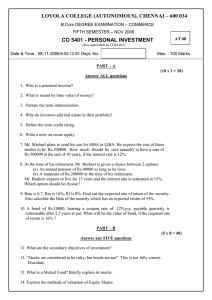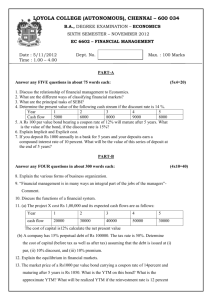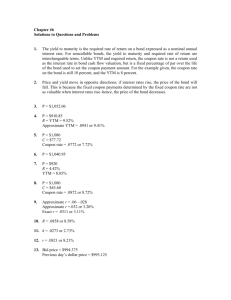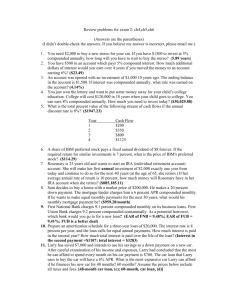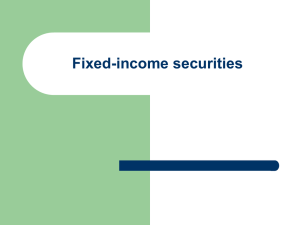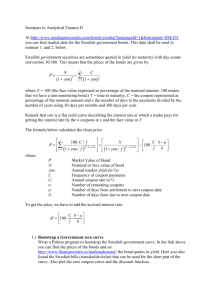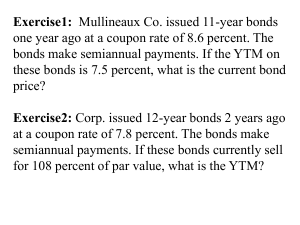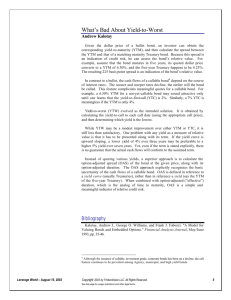4. Here we need to find the YTM of a bond. The equation for the
advertisement
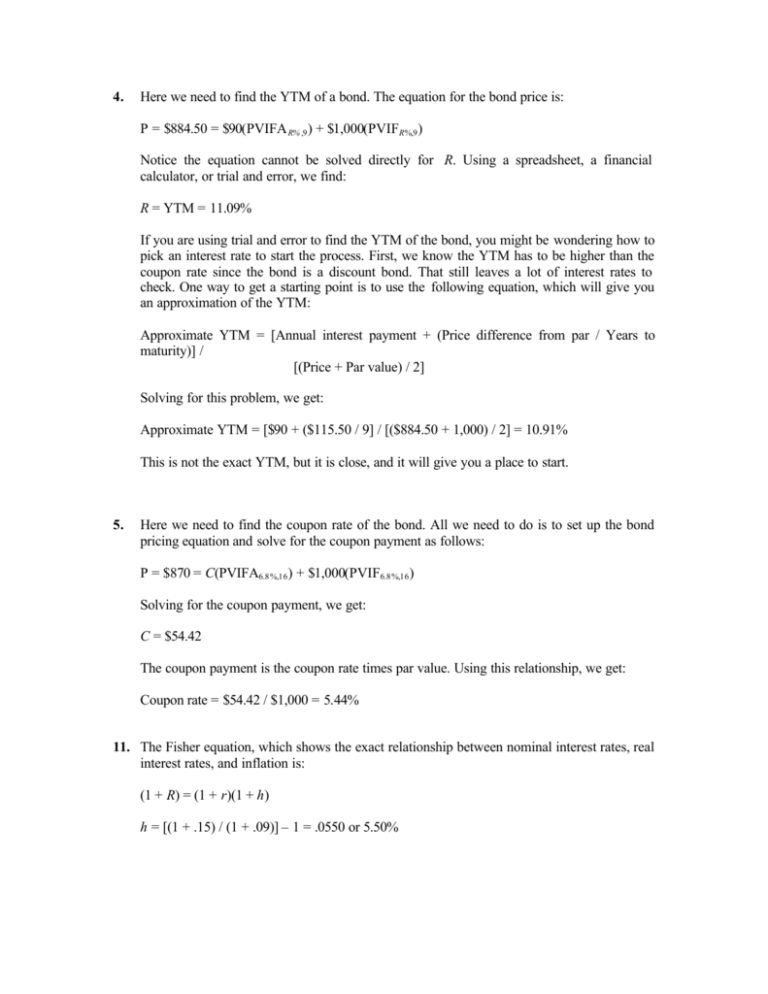
4. Here we need to find the YTM of a bond. The equation for the bond price is: P = $884.50 = $90(PVIFA R% ,9 ) + $1,000(PVIFR%,9 ) Notice the equation cannot be solved directly for R. Using a spreadsheet, a financial calculator, or trial and error, we find: R = YTM = 11.09% If you are using trial and error to find the YTM of the bond, you might be wondering how to pick an interest rate to start the process. First, we know the YTM has to be higher than the coupon rate since the bond is a discount bond. That still leaves a lot of interest rates to check. One way to get a starting point is to use the following equation, which will give you an approximation of the YTM: Approximate YTM = [Annual interest payment + (Price difference from par / Years to maturity)] / [(Price + Par value) / 2] Solving for this problem, we get: Approximate YTM = [$90 + ($115.50 / 9] / [($884.50 + 1,000) / 2] = 10.91% This is not the exact YTM, but it is close, and it will give you a place to start. 5. Here we need to find the coupon rate of the bond. All we need to do is to set up the bond pricing equation and solve for the coupon payment as follows: P = $870 = C(PVIFA6.8 %,16 ) + $1,000(PVIF6.8 %,16 ) Solving for the coupon payment, we get: C = $54.42 The coupon payment is the coupon rate times par value. Using this relationship, we get: Coupon rate = $54.42 / $1,000 = 5.44% 11. The Fisher equation, which shows the exact relationship between nominal interest rates, real interest rates, and inflation is: (1 + R) = (1 + r)(1 + h) h = [(1 + .15) / (1 + .09)] – 1 = .0550 or 5.50%
